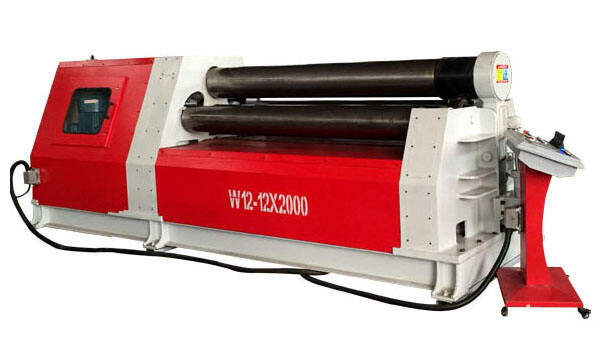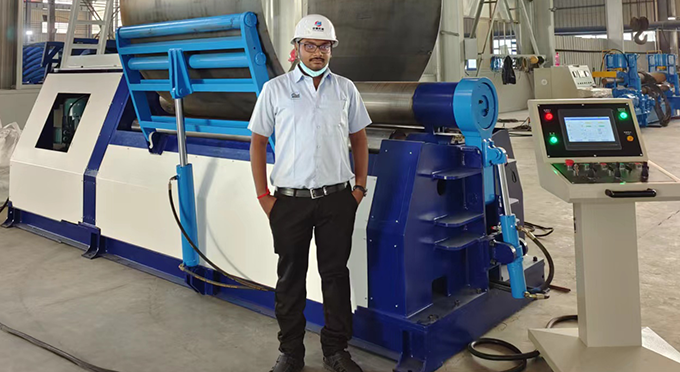Understanding the Need for Customized Plate Rolling Machines
Assessing Project Requirements for Specialized Bending
The journey to customizing plate rolling machines begins with meticulous assessment of project requirements. Firstly, understanding specific industry standards and project specifications is crucial in determining the need for a custom solution. For instance, different sectors such as aerospace, automotive, and construction each have distinct standards due to their unique operational and safety requirements. Secondly, workload variations and material characteristics, like thickness and type, significantly influence bending needs. Materials like aluminum and steel require different handling due to their diverse properties, necessitating tailored machine configurations. Lastly, it becomes evident that collaboration between engineers and manufacturers is pivotal. This partnership ensures that project goals align seamlessly with machine capabilities, leading to a product that meets precise specifications and enhances efficiency.
Industry-Specific Challenges in Metal Fabrication
In the realm of metal fabrication, each industry encounters its unique set of challenges that often require tailored solutions. Take aerospace, for example, where the need for lightweight yet durable components demands precision engineering in bending processes. In the automotive sector, the focus may be on speed and efficiency without compromising on material integrity, demanding robust and versatile plate rolling machines. Material types and thicknesses further complicate the landscape, as each variation affects the design and functionality of the machinery. For example, thick steel plates call for heavy-duty plate rolling machines capable of maintaining consistency in output. Studies show that industries that adapted faster to custom machine solutions reported a 15% increase in production efficiency, illustrating the benefits of addressing these industry-specific challenges with innovative solutions.
Types of Plate Rolling Machines for Special Projects
Three-Roll vs. Four-Roll Configurations
Understanding the differences between three-roll and four-roll plate rolling machines is crucial for selecting the right tool for your needs. The three-roll configuration comprises three equally spaced rolls that demand the initial feeding of the metal sheet between the top and bottom rolls. However, the four-roll configuration includes an additional roll, allowing for more precise control over the roll and minimizing the flat section left at the start of the rolling process. While three-roll systems are often favored for simpler projects and lower volumes, four-roll machines provide enhanced efficiency and precision, especially for more complex operations. Industries such as construction and manufacturing may often benefit more from the reliability and speed of four-roll systems, like those used by Double R Steel for substantial projects such as fuel tanks and light rapid transit systems.
Hydraulic vs. Mechanical Drive Systems
Comparing hydraulic and mechanical drive systems reveals significant differences in performance and maintenance demands. Hydraulic systems typically offer superior efficiency, smoother operation, and greater control, crucial for tasks requiring precise pressure adjustments. Meanwhile, mechanical systems are robust and reliable, often suiting environments focusing on lower maintenance costs and straightforward operations. The choice between them can significantly influence operational precision and is crucial for businesses aiming for specific performance outcomes. Data and performance metrics highlight that hydraulic systems generally allow for faster cycle times and enhanced control, aiding in achieving tighter tolerances and augmenting productivity in the metalworking industry.
Key Features for Customization in Heavy-Duty Applications
Roller Diameter and Material Thickness Compatibility
The roller diameter is a crucial factor in determining the types of materials and thicknesses that a plate rolling machine can effectively process. Larger roller diameters are capable of handling thicker and larger materials, providing the necessary support and strength for heavy-duty applications. For instance, when rolling thick steel plates, adequately sized rollers ensure the process is smooth and efficient without compromising the material's integrity. Industry standards suggest specific roller sizes for various materials; adhering to these can significantly enhance machine versatility. For businesses seeking customization in their plate rolling machines, ensuring compatibility between roller diameter and material thickness is fundamental to achieving optimal performance.
Advanced Control Systems for Precision Bending
Integrating advanced control systems in plate rolling machines is essential for enhancing precision in the bending process. Technologies like Computer Numerical Control (CNC) systems have revolutionized the industry by enabling greater accuracy and repeatability. These systems automate complex tasks and offer unmatched precision compared to manual adjustments. Expert opinions, such as those from industry leaders, consistently emphasize the benefits of precision control systems. For example, the integration of CNC systems in plate rolling has been shown to reduce setup times and minimize errors, therefore increasing productivity and efficiency. Businesses investing in advanced control systems are better positioned to achieve superior bending accuracy and meet stringent project specifications.
Pre-Bending Capabilities for Complex Shapes
Pre-bending features in plate rolling machines allow for the creation of complex shapes while maintaining material integrity, thus expanding the range of applications per industry needs. Specific sectors, such as shipbuilding and construction, significantly benefit from pre-bending capabilities due to the unique shapes required. In projects like constructing oil tanks or pressure vessels, pre-bending ensures that the initial and final products are both precise and durable. These capabilities not only enhance production efficiency but are also pivotal in enabling manufacturers to meet high precision standards. By investing in machines with robust pre-bending features, companies can tackle complex projects with greater confidence and achieve superior outcomes.
Applications of Customized Hydraulic Plate Bending Machines
Aerospace and Renewable Energy Components
Customized hydraulic plate bending machines play a crucial role in the aerospace and renewable energy sectors. In aerospace applications, these machines are indispensable due to the need for high precision and the ability to handle unique material types. Aerospace components often require bending metals such as titanium and aluminum alloys with exact precision to ensure safety and reliable performance. In the renewable energy sector, especially for wind turbine manufacturing, these machines provide the necessary flexibility and precision to curve blades and other structural elements efficiently. According to industry reports, the renewable energy sector is projected to grow significantly, increasing demand for customized hydraulic bending solutions to meet stringent environmental standards and technological needs.
Construction and Infrastructure Fabrication
In the construction and infrastructure sectors, customized hydraulic machines are pivotal in fabricating components for large-scale projects. These machines address the specific challenges of working with diverse materials and design requirements unique to each construction project. For instance, the construction of bridges, tunnels, and commercial buildings often necessitates the precise bending of large steel plates. Such tasks demand heavy-duty plate rolling capabilities, which custom hydraulic machines can provide. A notable example is the use of these machines in the fabrication of railway overpasses, where precision and durability of bent steel are critical. Tailored solutions not only enhance the efficiency of construction processes but also contribute to cost savings through reduced material waste and faster project completion times.
Optimizing Performance with Press Brake Machine Integration
Synergizing Rolling and Bending Operations
Integrating plate rolling machines with press brake machines can significantly optimize workflows in metal fabrication. By combining these two processes, businesses can achieve a seamless transition from rolling to bending, which enhances efficiency and precision. The synergy facilitates streamlined operations, leading to reduced production times and costs. However, challenges such as spatial requirements for machinery placement and alignment discrepancies between different systems may arise during integration. Overcoming these obstacles ensures the realization of full efficiency gains, as exemplified by projects that report notable improvements in throughput after successfully integrating both processes.
Maintenance Considerations for Hybrid Systems
To ensure durability and efficiency, routine maintenance is crucial for hybrid rolling and bending systems. Integrated machinery requires tailored maintenance practices to address the complexities of combining different technologies. Unique challenges, such as ensuring the compatibility of adjoining mechanical components and syncing software updates, require attention. Following guidelines from engineering bodies, it is essential to implement regular inspections and preventive measures, focusing on lubrication, alignment calibration, and software checks. By adhering to these best practices, businesses can optimize performance, extending the lifespan of their hybrid systems while minimizing downtime and repair costs.




